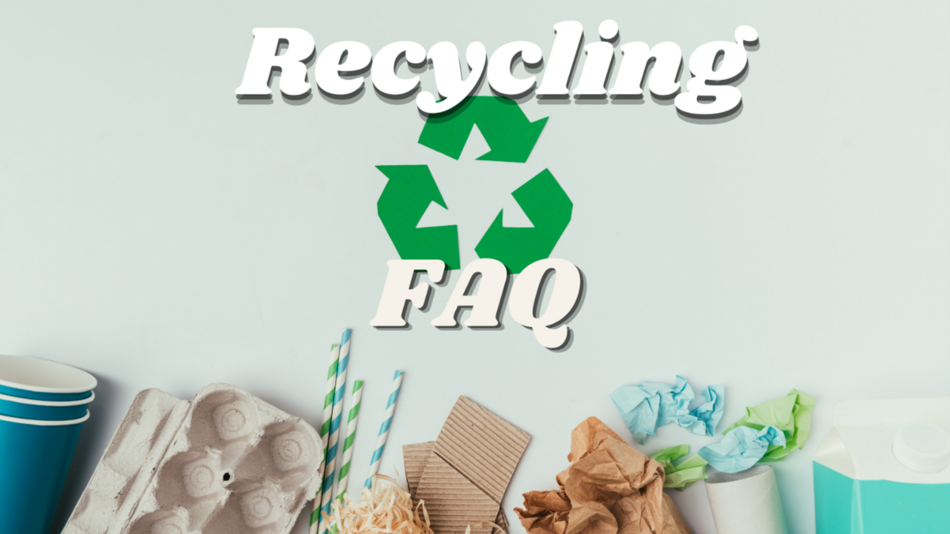Recycling in Encinitas FAQ: Part 2
The problem with Wishcycling:
Wishcycling happens when we put non-recyclable or contaminated recyclables into the blue bin hoping they are recyclable. Think of it as throwing an open bottle of dye in with your white laundry; one spill can contaminate the whole load.
According to EDCO, wishcycling bogs down the sorting process, which causes mechanical issues, slows down the manual sorting process, and increases operational costs.
Here are a few examples of items that are commonly wishcycled:
- Plastic trash bags (Yes! The ones you likely use to line your recycling bin.)
- Plastic bags
- Plastic wrappers
- Lightbulbs
- Compostable and biodegradable plastics
- Tissues and sanitizing wipes
- Masks and gloves
While recycling can be a beneficial resource, it only works if it is done correctly. So, when in doubt of where an item goes, throw it out!
How can residents ensure they are making their recycling count?
- Opt for less. The fewer single-use items purchased, means that less goes into the recycling, which reduces room for error. Reusing and upcycling what you have until it can no longer be used should be the first step, with recycling the item being next .
- Utilize clear signage! Make recycling simple by using a sign that clearly states what is and is not accepted can be a great resource.
- Be sure all items recycled are UNBAGGED, CLEAN, EMPTY, and DRY.
For more information on recycling practices and resources in Encinitas, click here.
Why is it so important for recycling to be Clean, Empty, and Dry?
The City’s curbside blue bins operate with single stream, or comingled recycling. This means that all recyclable items are placed in the same container, picked up by truck, and are then sorted at the recycling facility. If the items have not been rinsed or cleaned before being put in the bin with all the other recyclables, by the time they make it to the recycling facility, the contents can end up on other items, causing contamination.
For example, if a container with liquid inside was not emptied before being put in the blue bin, the liquid could leak on paper or cardboard items. Wet paper and cardboard cannot be recycled, and once wet these delicate products may interfere with the recycling machinery.
How Clean, Empty, and Dry do items need to be?
Some items are easier to clean out than others. For many items (soda bottles, condiment containers, takeout containers, etc.) simply giving the container a quick rinse before pouring out the remaining liquid or food remnants should suffice. Since ice will eventually melt, be sure no ice remains in the container. For items such as peanut butter jars, cream cheese, and other sticky items, a bit of food residue is acceptable, but no large chunks of food should remain. Use a spatula to scrape out the remaining contents of these containers before placing them in the bin.
A few drops of liquid are fine, but generally, minimal to no residue or liquid should be present in comingled recycling.
What are the options for recycling broken glass?
Unfortunately, broken glass is not recyclable. This includes broken mirrors, glass bottles, lightbulbs, ceramic, etc. Broken glass should be wrapped and placed in a sealed bag before disposing of in the trash bin to prevent injuries during waste hauling.
Try to repurpose broken glass by using it for crafts such as mosaics, do-it-yourself sea glass, and more. A quick Internet search can spark your creativity!
What should I do with packaging from shipments?
Plastic shipping envelopes and bubble wrap can be taken to redemption centers across the city, but please do not place these in your curbside bins.
Additionally, be sure to flatten cardboard boxes. If possible, EDCO requests residents to remove tape and shipping labels from boxes.
Do you have questions about specific items and where they belong?
Visit wastefreesd.org to learn more about specific materials and where they can be donated, recycled, or safely disposed of.
What laws and policies are being implemented to help recycling efforts?
Senate Bill (SB) 54 was signed into law in California on June 30, 2022. This law requires all packaging in the state of California to be either recyclable or compostable by 2032. Additionally, by 2032, all plastic producers must reduce the amount of plastic in packaging by 25%. This is an important step to reducing wishcycling as well as moving toward zero waste.
Sources:
Previous Post
Clean-Powered Communities
Next Post
How to incorporate sustainability into your child's online and in school learning


